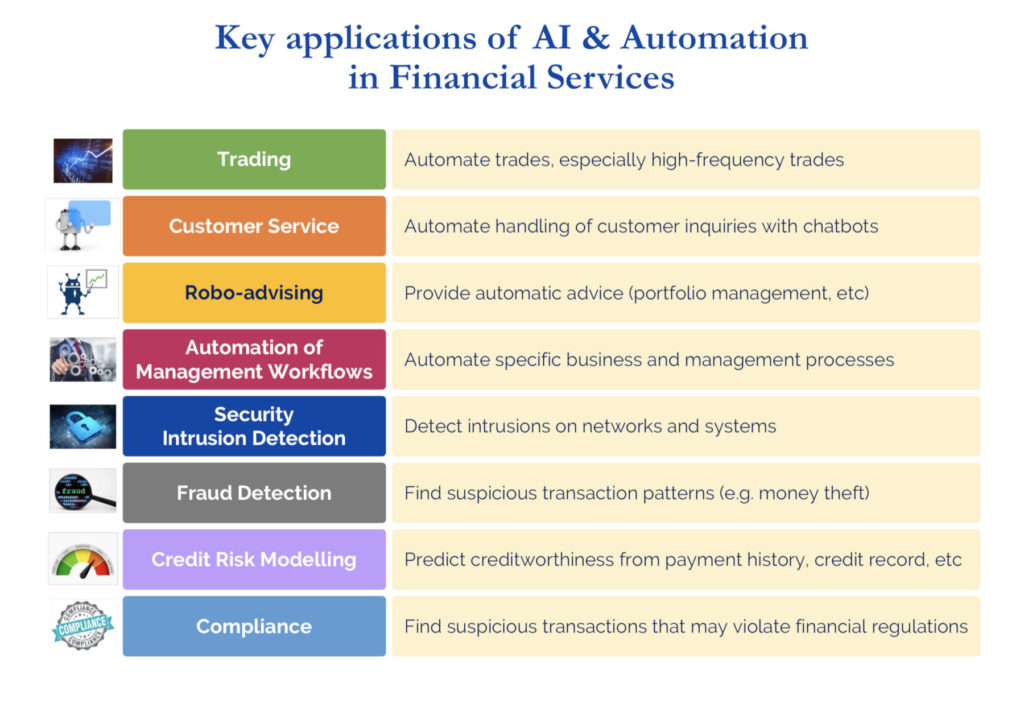It’s not easy to work in banking and financial services. Financial institutions must comply with a myriad of regulations and disclosure requirements (financial, data privacy, security, etc). They are often targeted by regulators and populists. However, on the bright side, the nature of their business puts them at an advantage for Artificial Intelligence (AI) and automation.
Data is an essential component for all AI techniques used today, especially Machine Learning (ML). Similarly, the business of financial institutions is fundamentally about data (i.e. executing and recording financial transactions). Financial data is numeric, which is a nice uniform data type, easier to feed into AI algorithms than unstructured data. In addition, while strong data capabilities are valuable for any business, they are vital for financial institutions. Hence, they tend to be better at it than other companies.
Therefore, it is not a surprise that financial institutions were among the first to adopt AI techniques. For example, ML algorithms have been used for years by sophisticated traders to automate high-frequency trades. Banks adopted early on phone and online chatbots to process customer requests. Credit-risk modelling, fraud detection, and compliance are other applications of AI and automation specific to the financial sector.
Successes in AI did not come without efforts and there has been disappointments. AI marketers never emphasize enough how much manual human labor is actually required to prepare training data for the AI/ML algorithms. Nor do they highlight that any AI technique requires extensive customization to work well for a specific context. AI is not an off-the-shelf product that one simply buys.
Our favorite AI application is the automation of management workflows. It is often overlooked because it requires extensive customization, as well as strong expertise in both business and technical topics. But in our experience it offers the biggest “bang for the buck” (relatively low investment for impactful results). Full automation is not necessarily the goal. Automating part of a management process can already go a long way to improve human productivity, as well as save time and costs. The goal is to automate tedious tasks so that human workers and managers can focus their time on high-value activities. Do you have to do the same thing twice because of different IT systems, do you redo the same analyses every month, do you run around to collect KPIs (Key Performance Indicators)? These are the types of problems we solve.
The biggest challenge is to get IT teams and business teams to work together well to identify the business and management processes most suited for automation. This is where an external perspective can help. We have found that with the proper people and expertise around the table, and the right methodology, it is possible design and implement effective automation solutions that benefit everybody.
We believe AI and automation are tools to solve problems and expand the range of human capabilities. That’s what technology is all about, and that’s why AI and automation are exciting.
